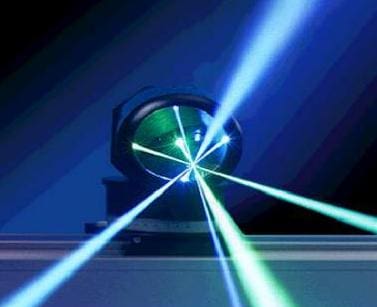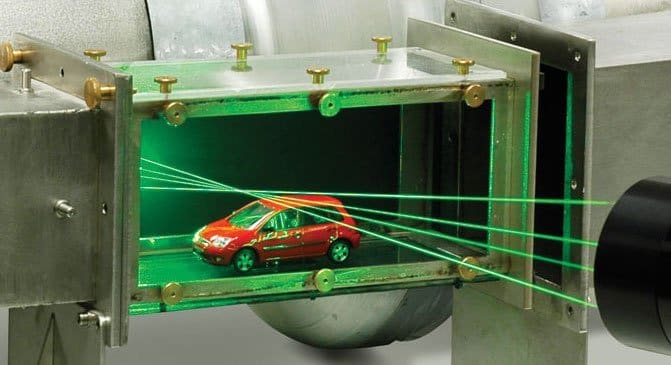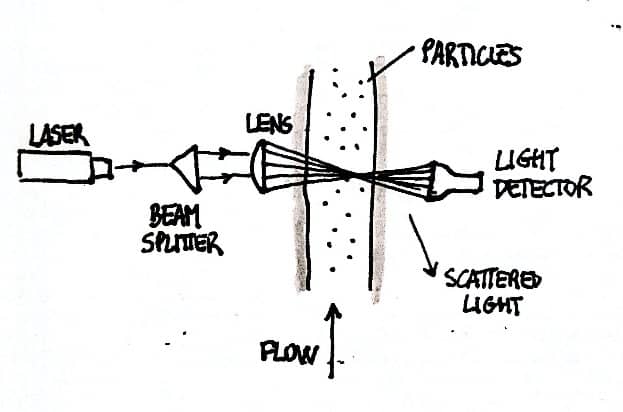Laser Doppler Velocimetry LDV
What is LDV and working principle of laser doppler velocimetry
What is Laser Doppler Velocimetry LDV?
Laser Doppler velocimetry LDV, also called laser Doppler anemometry, is a technique used to detect the speed of a fluid using laser light. It evaluates the change in wavelength or frequency of the photons that “hit” the moving corpuscles. The type usually used is an Argon or Helium-Neon ion laser, with a power ranging from 10mW to 20W.
The shorter the wavelength, the shorter the signal detection depth. With the most frequently used wavelength, i.e. 780 nanometres, the reading depth is about 1 mm.
What’s the working principle behind the laser doppler velocimetry LDV?
The particle reflection signal is captured by a Doppler detector which, through the frequency of the wave it receives, allows to calculate the speed of the particle. One of the most important advantage of this technique is the possibility of measuring the speed without any contact with the material even if a sufficient transparency is necessary to allow the laser beam to reach the receiver. The other advantage, unlike the other techniques, is the very high frequency response even if the accuracy of the measurement is particularly dependent on the correct alignment between the source and the photoreceptor.
Laser doppler velocimetry: the measurement system.
Other advantages are that the speed measurement is absolute and does not require any calibration curve of the instrument. The cost of this technology is still very high, effectively limiting its use to very particular applications. The cost is often caused by the need for sophisticated calculators to quickly process all the data.
This technique needs the insertion of the particles with the consequence also that the signal is not continuous but depends on the density of particles in the fluid. By inserting particles inside the fluid, through the reflection of the laser light we can calculate the speed of the fluid.
In order not to interfere, the particles must have densities and characteristics similar to those of the flow in which they are immersed; so we do not measure the velocity of the fluid but the speed of the particle, which having characteristics similar to the fluid moves with it.





